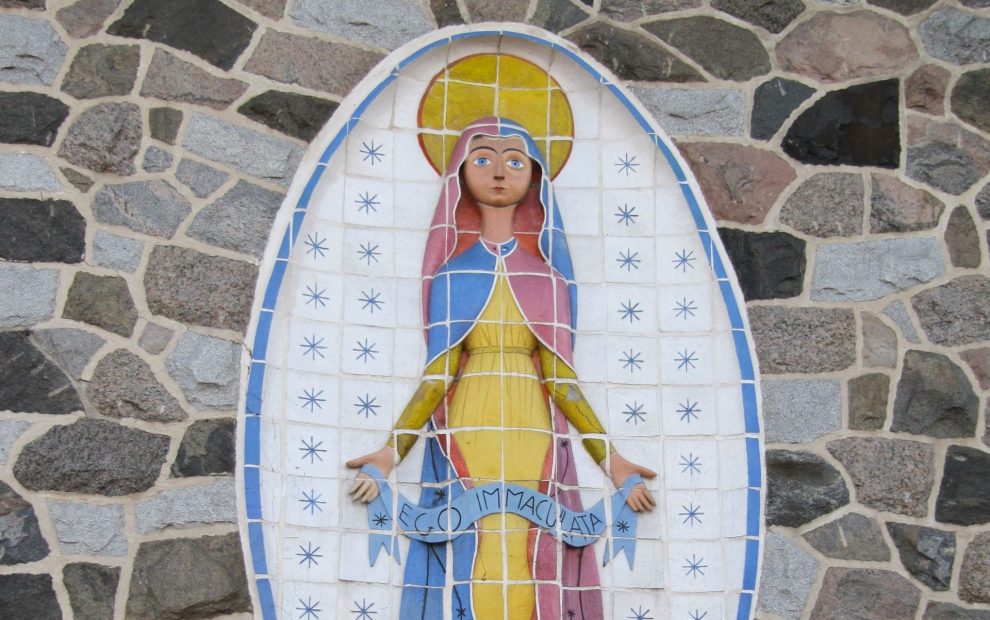In the Gospel of Luke an angel visits a young woman in Nazareth named Mary and asks if she will bear the Messiah. Mary says yes. Then, presto! Mary becomes pregnant with Jesus. This is known as the immaculate conception, right?
Wrong. Even though many Catholics connect this story in Luke’s gospel with the term immaculate conception, the doctrine itself refers to something different. It still refers to Mary, but it is not about how Mary became pregnant with Jesus. It is about how Mary’s mother became pregnant with her—deemed immaculate due to the absence of transmitting original sin.
In the 19th century the church faced a theological conundrum. If St. Augustine and the subsequent millennia of tradition were correct that sexual intercourse transmitted original sin, then Mary while in the womb would be stained by original sin. If Mary was stained by original sin, then she could not have carried the sinless Son of God in her womb without exposing him to original sin. And if Jesus was born with original sin, then he could not serve as the appropriate sacrifice on the cross to atone for a wounded world—as required by St. Anselm’s atonement theory, which guided the logic of many 19th-century theologians. So, if Jesus was exposed to original sin, there would be no possibility of salvation for humankind.
Rather than revise the doctrine of original sin, Pope Pius IX and his theologians proposed another solution: the immaculate conception of Mary. By doing this, they protected the sinlessness of Jesus—and thus the possibility of salvation for humankind—and further elevated the most venerated and beloved of all the saints: Mary of Nazareth. Moreover, in a context in which many of the church’s European leaders felt attacked by the Enlightenment and the intellectual tools of modern reason, they did not have to concede ground to the rational logic of modernism that was later condemned in 1864 by Pius IX’s The Syllabus of Errors.
Hence, Pope Pius IX declared the doctrine of the immaculate conception in his 1854 apostolic constitution Ineffabilis Deus (Ineffable God). Later, it was grandfathered into the First Vatican Council’s declaration of papal infallibility in 1870. It is one of only two teachings to be declared ex cathedra, or infallibly, by a pope. The other is Mary’s bodily assumption into heaven that was declared by Pope Pius XII in 1950.
Today, Catholics remember that Mary conceived Jesus through the power of the Holy Spirit. Mary’s courageous assent to a strange pregnancy and her yes to God and God’s plan are important to commemorate and venerate, but the doctrine of the immaculate conception does not refer to Mary’s pregnancy with Jesus. It refers to when Mary herself was conceived by her parents and God intervened to stop the transmission of original sin.
This article also appears in the April 2022 issue of U.S. Catholic (Vol. 87, No. 4, page 49). Click here to subscribe to the magazine.
Image: Wikimedia Commons/Cégep de Granby Haute-Yamaska, Mural of the Immaculate Conception
This article is also available in Spanish.












Add comment